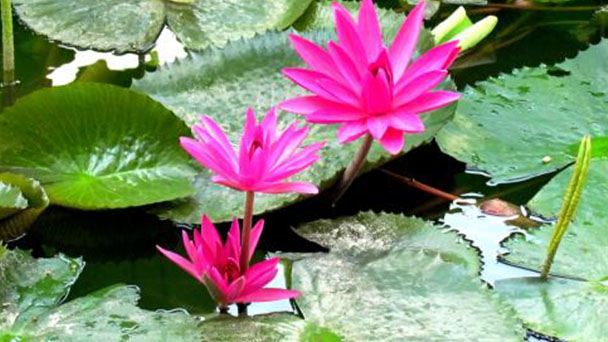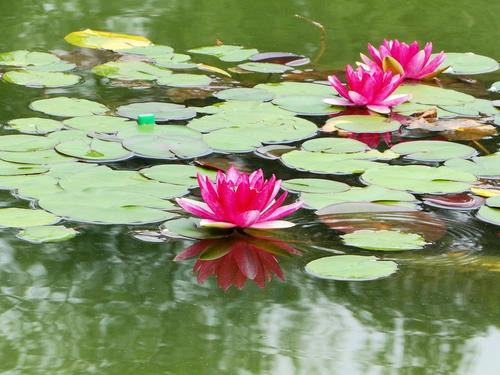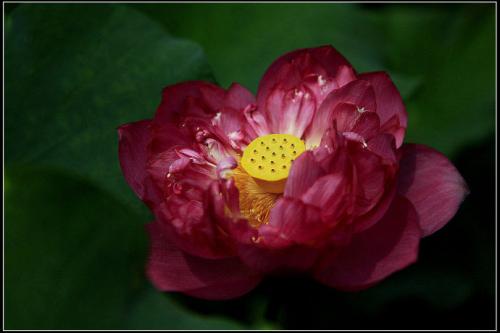Red Water Lily care tips
Written by Maggie
Sep 11 2021

Brown spot disease and spot rot are common diseases during the growth of Red Water Lily. So how to care for Red Water Lily when it occurs these diseases? Here are some care tips for Red Water Lily.

Care tips for Red Water Lily spot rot
Symptoms: variegated shape, small black blotches on leaves with initial water stains, then spread to a rounded to polygonal or irregular shape. The disease spot with yellow halo is black on the edge, and the wheel grain is grayish black in the middle. The disease part is easy to break or fall off, resulting in incomplete leaves and leaf margin. In severe cases, most or all of the red water lily leaves become black and brown and rot, with a layer of grayish brown mold on top, that is, the pathogen fruiting body.
1. During the Red Water Lily growing season, collect the diseased remains and bury them deeply for burning.
2. Apply sufficient organic fertilizer for Red Water Lily, promote the use of enzymatic bacteria composting. Timely and appropriate topdressing can combine organic fertilizer with chemical fertilizer, nitrogen fertilizer with phosphorus and potassium fertilizer.
3. After the disease strains of Red Water Lily were removed in a timely manner, spraying 600 times solution of 50% carbendazil wetting powder or 75% chlorothalonil wetting powder, 500 times solution of 36% carbendazil suspension, 1500 times solution of 50% carbendazil wetting powder and 800 times solution of 80% anthrax Fumimei wetting powder, once every 10 days or so, and continuously preventing and controlling for 2 to 3 times.

Care tips for Red Water Lily brown spot disease
Brown spot disease is a common disease during the growth of Red Water Lily. Small yellowish flecks appear on the leaves at first appearance, gradually spreading to round or subround spots, brownish, 0.6 to 10 mm in diameter. With the development and aggravation of the disease, the disease spot can reach 1/3 to 1/2 of the leaf area. The color of the leaf changes from green to yellow, the edge of the leaf becomes dry, and the whole leaf becomes scorched at the later stage, and a layer of dark green villi appears in the leaf and petiole. The flowering of the lightly injured plants was delayed or even did not blossom. In severe cases, the leaves of the whole plant were scorched until death.
The disease was caused by the infection of cauda fuschia, a fungus of the order phylum fascicularis. The bacteria overwintered with mycelium in diseased leaves and residues. The conidia produced in May to June of the following year spread the infection by wind and rain. The disease is most severe from July to August, and high temperature and humidity is an important factor for the occurrence and development of the disease. Especially during the storm, when the leaves are damaged or submerged by water, it is extremely conducive to the infection of the bacteria and often causes the rapid spread of the disease. Red Water Lily leaves are too dense, with poor light transmission, and are prone to disease after suffering from insect pests.
Prevention and cure can proceed from the following aspects.
Strengthen cultivation management of Red Water Lily. In addition to selecting healthy and disease-free underground stem cultivation, during the growth of Red Water Lily, the diseased, disabled and old leaves should be timely pruned to reduce the source of infection and enhance the light transmittance. Reasonable application of nitrogen, phosphorus and potash fertilizer can make Red Water Lily grow robust and improve disease resistance.
Strengthen protection. During the stormy season, protective measures should be taken to prevent the wind from damaging Red Water Lily leaves and flooding plants.
Chemical control. Before the onset of Red Water Lily 1:1:10 spray 1 to 2 times 0, the same type of bordeaux mixture can effectively prevent the happening of the disease, early onset, spray 65% zineb wettable powder 800 times liquid, or 50% carbendazim wettable powder 600 times liquid, and every 7 to 10 days 1, 3 to 4 times, which can effectively control the expansion of the disease.

Latest Updated
- Benefits of Bugleweed - 7 Science-backed Health Benefits
- Bugleweed Dangers & Side Effects - Is It Poisonous?
- How to Plant Evergreen Trees - What You Should Know
- When to Plant Evergreens - Grow Guide for Evergreen Trees
- 12 Wonderful Evergreen Shrubs for Your Garden
- 12 Popular Evergreen Plants with Pictures for Beginners
- When And How To Prune A Lilac Bush Like a Pro
- How to Grow & Care for Lilac Vine (Hardenbergia Violacea)
- Japanese Lilac Tree (Syringa Reticulata) Care & Propagation Guide
- Shumard Oak Pros and Cons - What to Know
Popular Articles
- Winter maintenance of Antirrhinum Majus
- How to Grow Terminalia Mantaly Tree
- How to Grow and Care for Crossostephium Chinense
- How to grow Antirrhinum Majus in spring
- Peristeria Elata (Dove Orchid) Profile: Info & Care Guide
- Underwatered Snake Plant (Sansevieria Trifasciata) - Signs And How To Fix
- How to Care for Brazilian Jasmine Plant (Mandevilla Sanderi)
- How to Grow & Care for Graptopetalum Purple Delight in Summer
- Rosa Chinensis (China Rose): Plant Growing & Care Tips
- How to Care for Baby Sun Rose (Aptenia Cordifolia)